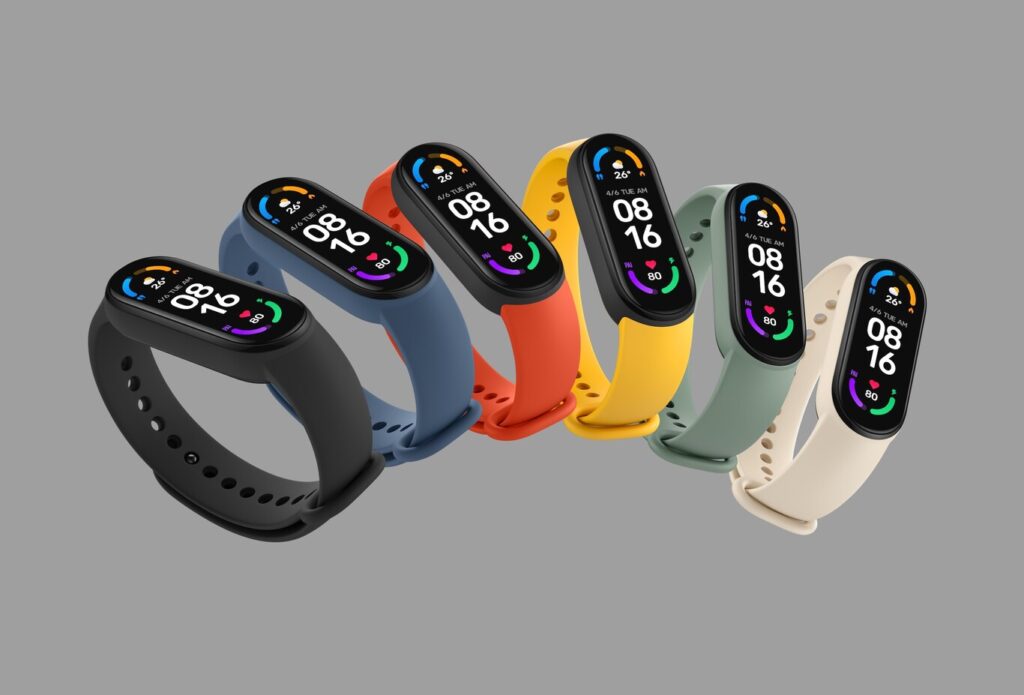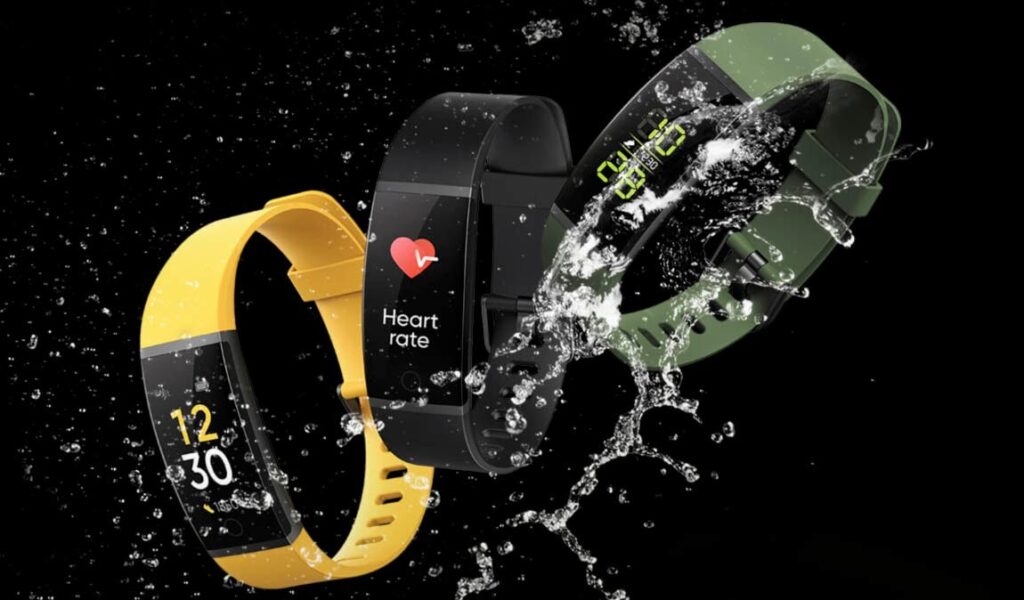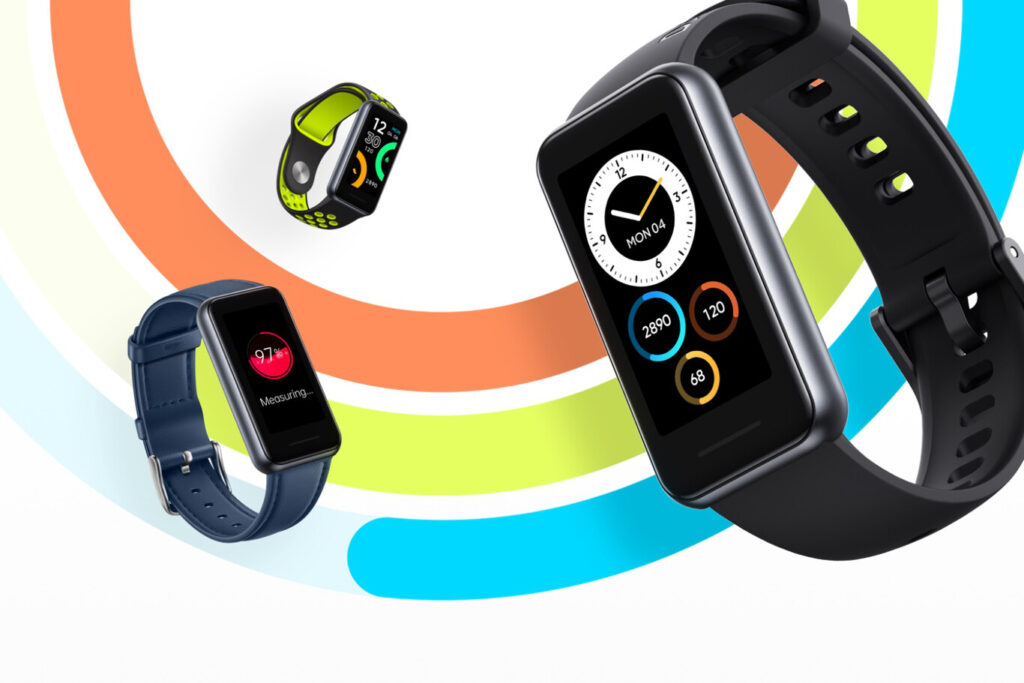Over a year has passed since realme decided to introduce its first activity wristband, the realme Band. Now the company is renewing the first version with a bracelet that significantly improves some of the shortcomings of the original version while redesigning the lines to make its particular wearable more like a smartwatch. In front of this, we find such interesting options as the Xiaomi Mi Band 6, which in the middle of 2021 reigns with an iron fist. The question that many are asking is: Which is the better bracelet of the two? And more importantly, what are the differences between the realme Band 2 and Mi Band 6? Let’s take a look.
The Differences Start With The Design: Format, Display, and Width
If the original realme Band borrowed some design lines from Xiaomi’s Mi Band, the second version comes with a much squarer format and a more spacious 1.4-inch screen. Interestingly, the Mi Band 6 has 1.56 inches, although the usable area is smaller due to the screen format itself, more elongated in Xiaomi’s case and more square in realme’s, as can be seen in the product images.

This has an impact on the amount of useful information that the panel can hold, from app notifications to weather or physical activity information. In this regard, the realme wristband has the edge. Where we also find differences is in the screen technology, which is seen in the maximum brightness of the panel outdoors and colorimetry.
Xiaomi’s Mi Smart Band 6 screen is based on AMOLED technology, while the realme bracelet uses a conventional LCD panel. The resolution of the two panels is similar, beyond the difference in height and width, while the maximum brightness is higher on the realme Band 2: 450 nits versus realme’s 500 nits. The result? Better outdoor viewing. It is also worth noting that Xiaomi’s bracelet has an anti-fingerprint coating, a feature not found on Band 2.
Same Water Resistance, At Least Theoretically

To exercise in pools and beaches, the two brands offer an immersion level of 5 atmospheres, which is equivalent to a depth of 50 meters on a theoretical level. Unfortunately, despite having a waterproof design, neither of the two companies ventures into certifying dust and water resistance to the IP standard (IP68, IPX8, IP67…). In this regard, it is best to remove the bracelet from the wrist in saltwater or in the presence of dust or sand.
Blood Oxygen Meter: The Feature That Makes The Difference
The main novelty of the realme Band 2 beyond the design is found in the activity sensors it incorporates. The new generation comes with a SpO2 blood oxygen meter, in addition to a heart rate monitor capable of measuring heart rate and, therefore, the level of stress, sleep, and breathing. The Mi Band 6, on the other hand, lacks such a meter, although it incorporates a PPG heart rate sensor to measure the same values as the realme bracelet.

The incorporation of a SpO2 sensor also has an impact on the number of activities that the bracelet can recognize, at least on a theoretical level. We are talking about the bracelet being able to recognize up to 90 different sports, compared to the 30 of the Mi Smart Band 6. Some of the compatible activities are treadmill, freestyle, outdoor running, cycling, hiking, swimming pool, rowing machine, elliptical, indoor cycling, yoga, jumping rope, dancing, indoor gym, and gymnastics, among others.
As for the other functions, the two wristbands offer more or less the same range of possibilities: menstrual cycle control, timer and stopwatch, alarm, remote multimedia control, remote shutter and camera control, etc.
More Battery In The Realme Band 2 But Less Autonomy With Differences Also In Connectivity

Who knows if it is due to optimization, the smaller surface of the screen, or the same technology. Specifically, the realme bracelet has 204 mAh compared to the 125 of the Mi Band 6. Based on these figures, the autonomy estimated by the manufacturers is 12 and 14 days respectively, depending on the use of the connections and the screen. On the other hand, the charging of the bracelet in both cases is done through a magnetic mechanism. In the case of Xiaomi, the brand promises to get a full charge in just under 2 hours, while realme does not figure an estimate.
Speaking of connections, the realme Band 2 has Bluetooth 5.1 compared to the fifth version of the Mi Band 6. In theory, the range ratio and connection stability are higher, although this also depends on the Bluetooth version of the mobile device.
Pricing and Availability of the Realme Band 2 and Xiaomi Band 6
At the time of publishing this article, realme has not confirmed the price of the realme Band 2 in the international, although at the exchange rate it is about €22 approximately. Currently, the Mi Band 6 is sold for €45 on the official Xiaomi website, while the version with NFC will cost approximately €56. It is in the user’s decision to opt for one model or the other.
This post may contain affiliate links, which means that I may receive a commission if you make a purchase using these links. As an Amazon Associate, I earn from qualifying purchases.

